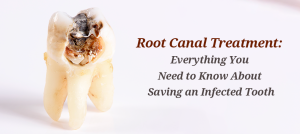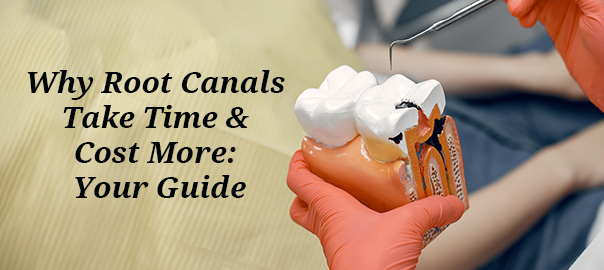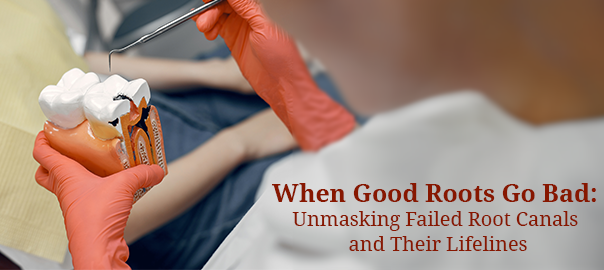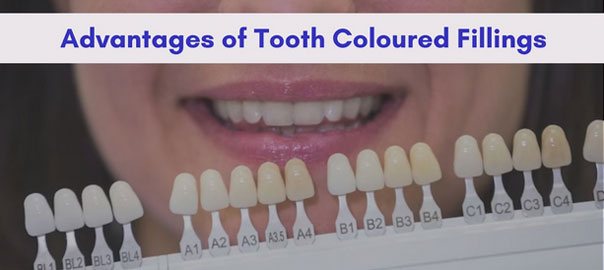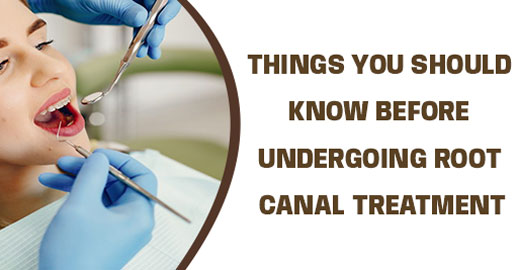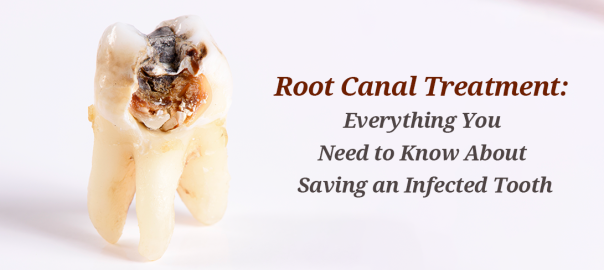
Everything You Need to Know About Root Canals (Before It’s Too Late!)
The Dream of an Infected Tooth.
Have you ever experienced an excruciating toothache right before an important event? Or an unbearable pain that doesn’t let you sleep? If so, you’re familiar with the nightmare that comes with an infected or damaged tooth. Well, the infected tooth feels the same, and it’s entirely upon you whether you make it a pleasant dream or a nightmare for it. Tooth infections don’t just disrupt your day—they can evolve into serious health concerns too. Fortunately, modern dentistry offers a highly effective solution.
What Is a Tooth Infection? Symptoms You Shouldn’t Ignore
A tooth infection occurs when micro-organisms (bacteria, etc.) invade the layers of your tooth. Here’s a closer look at the different layers of a tooth and how to look for infection:
| Tooth Layer | Location | Symptoms of Infection |
|---|---|---|
| Enamel | The hard, protective outer layer of your tooth | Black spots on the tooth, black-grey discoloration on the surface of the tooth, sensitivity to sweets, cold, or hot foods. |
| Dentin | The middle layer beneath the enamel | Larger black patches on the tooth, intensified sensitivity to hot, cold, sweet, or sour food, pain while chewing, and food getting stuck. |
| Pulp | The innermost part with canals, housing nerves, and blood vessels | Severe pain, swelling in the gums, facial swelling (near eyes, nose, ear, or jaws), pus discharge, broken parts of the tooth, difficulty sleeping due to constant pain, and headache especially in the sides near the ear. |
When to See a Dentist for a Root Canal?
Early detection can save both your tooth and wallet. How? If you see any symptoms that are in the location of Pulp or Dentin, visit your dentist immediately. The dentist will perform a clinical examination and likely take an Dental X-ray to assess the location of the infection. If the infection has reached the pulp or is very close to it.
Root Canal vs. Extraction: Which Is Better?
When micro-organisms infect the pulp of your tooth, two primary options are available:
1. Why Removing a Tooth Isn’t Always the Best Choice
While this eliminates the infection, it also leads to gaps in your smile, which may affect chewing and speaking. The discomfort during it, restrictions after removal, and check-ups after it. No doubt replacing a tooth can be costly.
2. How a Root Canal Saves Your Natural Tooth
A simpler approach that allows you to retain your natural tooth while eliminating the infection.
- A painless procedure/ option.
- No/ minimum restriction(s) on food and lifestyle after it.
- You can go back to work as there is no stay period.
- No uneasiness after or during the treatment.
- Cost-effective and long-term return/ benefit of the work. (Depending on the severity it will cost you around 5000- 15000 INR)
- Preserve your natural tooth.
- Prevents surrounding teeth from shifting, which could cause bite issues or jaw pain.
Root Canal Procedure: Step-by-Step Guide
Always visit a certified dentist/specialist in a good and clean clinic/ hospital because the correct finding and treatment are essential. The RCT is usually done in 1-3 visits (sittings). But what is happening? what is being done to the tooth? a simple way to put it will be as follows: –
- Step 1. Cleaning of the inner parts (canals) and infection and micro-organisms with special instruments known as Files. The dentist will also put cleaning liquids and paste inside the tooth to kill all micro-organisms.
- Step 2. Once your canals and teeth are cleaned, the canals are smoothened, shaped, and widened enough to make them ready for permanent filling. This step is also done to make sure no infection is left behind.
- Step 3. After making it to the perfect shape and size the permanent filling is done with a material that is non-reactive (no side-effect on the body and mouth), gives tooth support, and seals off the canal to protect it from infection again.
And that’s it, just 3 simple steps, during the procedure you will be given local anesthesia (to numb the area) so that you can sit comfortably. The dentist will be taking Dental X-rays as and when required to see the infection, canals of the tooth pulp, and the filling materials. If the root canal is done in more than 1 visit then a temporary dressing (covering) is given on the tooth. You shall also be expected to take medications like painkillers and antibiotics on the first visit.
Post-Treatment Care: What Happens After a Root Canal?
Well, in life nothing is enough, and the same with RCT. After that, the dentist may recommend depending on your situation:
- Simple filling: this will be done where much of the tooth’s structure remains behind.
- Filling with Cap: A bigger filling will require a Cap (crowns that act as a shield to protect your teeth while eating) eventually.
- Urgent Cap: A big filling and immediately starting with the Cap and putting it on within a fortnight.
Root Canal Myths & Facts
Myth: “Root Canals Are Painful.”
Fact: RCT is the most frequent procedure in dentistry. Thanks to modern techniques, RCTs are painless and comfortable.
Myth: “Extraction Is Better Than a Root Canal.”
Fact: While extraction it can also lead to bone loss and changes in your bite unless replaced by an implant or bridge, which are costlier solutions. RCT on the other hand, is cheaper and a long-term risk-free solution.
Myth: “The Infection Can Return After an RCT.”
Fact: A properly performed root canal, followed by a well-fitted crown, significantly reduces the risk of reinfection.
Final Thoughts: Protect Your Smile with RCT
An RCT is a safe, effective, and often painless solution for saving infected teeth. By choosing RCT, you not only eliminate the source of your pain but also preserve the function and aesthetics of your natural teeth.
If you experience tooth pain or signs of infection, consult a dentist immediately—your smile will thank you.
Thank you for reading!
By Dr. Shivang Pandey









